by Lorri | Jan 16, 2013 | UnCorked
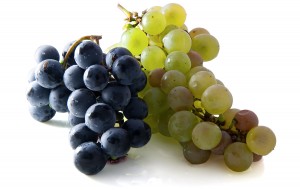 This time of year many of us are looking for a healthier start and ways to make better choices.
This time of year many of us are looking for a healthier start and ways to make better choices.
And we often hear about the heart-healthy benefits of alcohol, but also the disadvantages.
A recent news release offered some insightful information on the debate. So what is the truth behind alcohol use and your heart? The answer, in short, is moderation.
“The kind of alcohol you drink matters too,” says cardiovascular, thoracic and vascular surgeon Jonathan Fong of the Venice-Ocala Heart Institute in Venice, Fla.
“The possible heart benefits of alcohol primarily have to do with its effect on atherosclerosis,” explained Dr. Fong in the release. “This condition occurs when cholesterol deposits build up in the arteries, potentially leading to a heart attack. However, alcohol – in moderation – may decrease the chances of developing this disease.”
Red wine has been the focal point of many studies regarding alcohol and heart health. It has been shown to offer the same benefits as other forms of alcohol, but it does have one additional ingredient that may give it a slight advantage over other alcohols. This component, called resveratrol, is an antioxidant that helps protect the lining of the heart’s blood vessels and comes from the grape skins used to make the wine. Because red wine is fermented with these skins longer than white wine, red wine contains more of this healthy ingredient. But white wine lovers need not switch to red just yet. New research suggests the pulp of the grapes used can be just as heart-healthy as the skin.
“Healthy ‘doses’ of alcohol are small ones and only beneficial for some – not all – people,” says Fong. “And these amounts differ between men and women.”
According to the American Heart Association, moderate drinking for healthy men means no more than two servings per day, and for healthy women, no more than one glass a day. One approved serving of alcohol consists of:
- 12 ounces of beer
- 4 ounces of wine
- 1.5 ounces of 80-proof liquor
- 1 ounce of 100-proof liquor
So, while alcohol has been shown to have some heart healthy benefits, before enjoying a few drinks in honor of our body’s most important muscle, remember that moderation is key.
by Lorri | Jan 9, 2013 | Tips, UnCorked
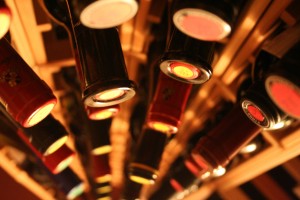 This is the second in a two part column about wines to stock in order to have a variety on hand.
This is the second in a two part column about wines to stock in order to have a variety on hand.
Last week we looked at the first six bottles of wines to consider when starting a collection. This second group rounds out the assemblage with more food-friendly wines for a variety of occasions.
ALWAYS THE SEASON
Of course port is ideal during Thanksgiving and Christmas, but it is often overlooked as the perfect dessert wine or ending to a meal. Vintage port can command high prices – from hundreds of dollars and beyond, depending upon the year. But the high price doesn’t mean budget-savvy drinkers have to forgo port. The bottle I would have on hand would be another version of port, the tawny port.
Tawny port is identified by age (10 or 20 years old) rather than vintage. The age refers to how long the port matured in the cask. This difference also is reflected in the price, making the tawny a great value to have on hand.
- Taylor Fladgate 10-Year-Old Tawny Port, Portugal (about $35 retail)
FOOD’S BEST FRIEND
Riesling is the ideal foodfriendly white wine. It’s the acidity in the wine that allows almost any food to show off and not be overpowered by tannins or full-bodied style. This grape generally has a lower alcohol level than most white wines, which is another plus.
- 2007 Grand Cru Saering Riesling, France (about $32 retail)
FAMILIAR WHITE
Chardonnay is still the most recognizable grape for most wine drinkers. Many chardonnay styles can be high in oak and high in alcohol. The bottle I would have in my case would be a French style or a balanced, less oaky California. This addition is another wine guests will be familiar with and it pairs with almost every white-meat dish.
- 2011 Louis Jadot Macon-Villages Chardonnay, France (around $13 retail)
THE FRESH ITALIAN
Moscato d’Asti should be enjoyed when it’s young and fresh. This is one of the few wines I would recommend you add to your collection, with the plan being to open it within 3 months of when you bought it. It needs to be served chilled and pairs with an array of foods ranging from breakfast to dessert.
- 2012 Vietti Moscato d’Asti “Cascinetta Vietti,” Italy (about $16 retail)
MUST-HAVE FAVORITE
Gewurztraminer is a great partner for lighter foods and anytime on its own. It is one favorite everyone should have in a collection.
- 2010 Pierre Sparr Gewurztraminer, France (about $18 retail)
A WINE MADE FOR DINING
Last but not least is Chianti. This Italian wine was made for food. The main reason I enjoy having this wine on hand is its effortless way of pairing with a range of foods – from cold pizza to homemade pasta sauces. And there’s no reason to spend a lot of money because many Chiantis can be found for less than $20.
- 2010 Cecchi Chianti Classico, Italy (about $14 retail)
by Lorri | Jan 2, 2013 | UnCorked
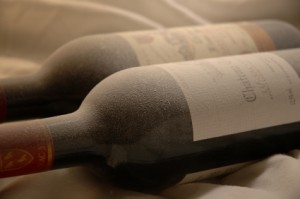 This will be a two-part column about recommended wines to stock in order to have a variety on hand.
This will be a two-part column about recommended wines to stock in order to have a variety on hand.
The idea of starting your own wine collection or filling a cellar is very intimidating for most of us. But keep in mind only a minuscule percentage of wine drinkers are actually buying and investing in fine wines to age and cellar for extended lengths.
Most of us are simply interested in buying wines to drink and enjoy while taking advantage of the convenience of selecting a bottle at home rather than making a special trip to the wine shop for every occasion.
Many readers ask me what wines I recommend for keeping a case on hand or what I would select for starting a collection. I think a great place to start is with a variety of wines from light to fullbodied, sweet to bubbly, and wines for many occasions. You don’t have to have a cellar to begin collecting. It can start with a wine rack, corner of the refrigerator or even the back of your closet.
SPARKLING
If you are ever stumped or in doubt about which wine to pair with your creation, grab a bottle of bubbly. Sparkling styles are extremely versatile to have on hand, whether for toasting a special occasion or serving with salty or fried appetizers or just about any entree you could craft. I also like to keep a bottle or two on hand for a great last-minute hostess, birthday or anniversary gift. There’s no need to spend a lot, because there aremany values ranging from $10 to $20 a bottle with excellent quality.
- NV Piper Sonoma Brut Sparkling, California (about $15 retail)
WELL-ROUNDED WHITE
The go-to bottle for salads, seafood, vegetables and most cheeses is sauvignon blanc. This crowd-pleasing wine has a refreshing acidity, light body and tropical fruity taste.
- 2011 Honig Sauvignon Blanc, California (about $16 retail) BLUSHING BEAUTY
Many of you already knowmy thought on rose wines is that they are very underrated. This incredibly versatile style should be part of everyone’s case on hand. It is appropriate for the most formal occasion or an outside picnic and can pair with meats ranging from light to dark. The key is staying with a dry or off-dry choice.
- 2011 Cline Vineyards Rose, California (about $15 retail)
WHERE THERE’S SMOKE
For avid grillers, syrah/shiraz is must-have in the collection. It’s as if this wine was created solely for full-bodied, earthier red meats and other foods cooked over an open flame.
- 2010 Wyndham Estate Shiraz Bin 555, Australia (about $14 retail) COMFORTABLY RED
If for no other reason than its familiarity for guests, a cabernet sauvignon is important to have on hand. It matches well with hearty meats and pasta dishes and soups and cheeses. I keep a few bottles on hand to serve as an option as a quick gift.
- 2010 Liberty School Paso Robles Cabernet Sauvignon, California (about $15 retail)
PLAYS WELL WITH OTHERS
Wine experts and chefs agree: Pinot noir is the ultimate food-friendly red wine. Also it’s an ideal wine for dinner menus where red meat and fish are being served.
- 2010 Estancia Paso Robles, California (about $14 retail)
by Lorri | Dec 26, 2012 | UnCorked
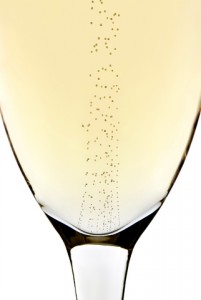 Following the hectic bustle of Christmas shopping, travel and choices galore, it’s refreshing knowing that buying the ideal wine for New Year’s Eve is an uncomplicated decision. The tradition poured into the magical midnight toast only seems possible if you see tiny bubbles dancing in the glass. Not to say other wines, beers and spirits are not welcome at the occasion, but something about the sound of Champagne flutes clinking in a toast as the clock strikes midnight makes it an unquestionable choice.
Following the hectic bustle of Christmas shopping, travel and choices galore, it’s refreshing knowing that buying the ideal wine for New Year’s Eve is an uncomplicated decision. The tradition poured into the magical midnight toast only seems possible if you see tiny bubbles dancing in the glass. Not to say other wines, beers and spirits are not welcome at the occasion, but something about the sound of Champagne flutes clinking in a toast as the clock strikes midnight makes it an unquestionable choice.
THE HISTORY
Our fascination with Champagne is linked to its long history and an extensive list of contributors along the way, Dom Perignon undeniably the most famous. But a few other discoveries had to come before Perignon could declare: “Brothers, brothers, come quickly for I am seeing stars.”
Two of those developments occurred around the same time – the development of stronger glass for the bottle and an airtight cork closure. Before the
17th century, wine was stored in casks and individuals took their own fragile bottles to local wine merchants, where they were filled and an oil soaked rag acted as the cork. Things changed when King James I requested that Sir Robert Mansell, an Admiral of the Fleet, stop using wood for heating the furnaces that produced glass because of his fear they would not have enough oak for shipbuilding. Wood was replaced by sea coal, which created a higher temperature and produced a stronger glass. About the same time, cork was discovered and replaced the oil-soaked rag, and voila, the industry was on its way to what we think of when we drink modern-day Champagne.
THE BOTTLE SIZE
A typical Champagne bottle is 750 milliliters; however, many other bottle sizes exist. The rare sizes are also known by the names of biblical kings:
Magnum (1.5 liters), Jeroboam (3 liters), Rehoboam (4.5 liters) Methuselah (6 liters), Salmanazar (9 liters), Balthazar (12 liters), Nebuchadnezzar (15 liters) and the rare Sovereign, which holds 125 glasses for your guests.
THE TOAST
The toast is also part of the tradition and magic of Champagne, sparkling wine or anything that bubbles. As early as the sixth century B.C.- the Greeks were toasting to good health, longevity and loved ones. The gesture was not simply symbolic, as are today’s toasts, but much more literal and practical. Sixth-century wine drinkers were often served intentionally poisoned vino – a common way of dispatching a rival or solving social problems. Thus began the custom of the host pouringwine into a glass, taking a drink and then toasting while raising his glass to friends and guests.
The modern-day toast is not as complicated, but there are a few simple tips to remember. Be simple and meaningful to those who you are offering the toast, stand and be brief, and end on a positive note by offering “cheers” or “raise your glass” for those you are toasting.
THE LABELS
The label can be the trickiest part for consumers. Most Champagne or sparkling wine will be brut, which means dry, but also you’ll see sec (which literally means dry) but in terms of Champagne means off-dry. Demi-sec is a medium-dry style, with noticeable sweetness. The sweetest are douz and moelleux.
by Lorri | Dec 19, 2012 | UnCorked
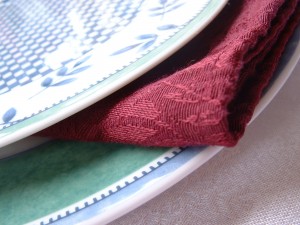 Choosing an ideal wine for Christmas festivities can be a hit or miss affair. We usually meticulously plan and prepare our menus, but sometimes the wine pairing is a last-minute thought. Here are some tips for effortlessly pairing Christmas foods and wine.
Choosing an ideal wine for Christmas festivities can be a hit or miss affair. We usually meticulously plan and prepare our menus, but sometimes the wine pairing is a last-minute thought. Here are some tips for effortlessly pairing Christmas foods and wine.
Christmas starters are the perfect time to pop open a bottle of bubbly. It pairs perfectly with a wide range of flavors and textures, but most importantly can handle anything from light and airy sweets to baked, grilled or even deep-fried appetizers.
THE VALUE
- NV Segura Viudas Brut Cava, Spain (about $11 retail) THE SPLURGE
- NV Roederer Estate Anderson Valley Brut, California (about $28 retail)
Ham is a staple on many Christmas menus, but the salty meat can be tricky to match with wine. Ingredients such as a honey or sugar glaze can accentuate the bitterness of tannins. The best pairings are light-bodied red wines (pinot noir, merlot, syrah) without over-powering tannins ormedium-bodied whites (chardonnay, Riesling, vermentino or albarino) without searing acidity.
THE VALUE
- 2011 Montes Alpha Chardonnay, Chile (about $12 retail)THE SPLURGE
- 2011 Tenuta Guado Al Tasso Vermentino, Italy (about $29 retail)
With beef, red wine is ideal, but as with other meats, it’s the added sauces or cooking methods that guide a perfect match. If the meat is cooked rare, the tannins are softened and offer a perfect opportunity to serve a high-tannin or youthful wine. If you plan to serve an older, fragile wine, consider preparing the meat medium-rare or medium.
THE VALUE
- 2010 Liberty School Paso Robles Cabernet Sauvignon, California (about $15 retail) THE SPLURGE
- 2010 Bell Vineyards Claret, California (about $36 retail)
Goose offers a unique texture and taste compared to traditional turkey. It is richer and generally has a distinct gamy flavor. When matching with wine, consider rich reds with a touch of spice such as Burgundies, Barolos, syrah or blends. For the adventurous, pairing aged Champagne is spectacular.
THE VALUE
- 2010 Red Bicyclette Syrah, France (about $10 retail) THE SPLURGE
- 2010 Canto de Apalta by Lapostolle Proprietary Blend, Chile (about $22 retail)
Turkey may be the easiest to match with wine. Because of its fairly simple texture and taste, it offers many wines the ability to show off. However, if you are planning to bring out a favorite cellared wine, consider roasting the turkey rather than smoking or grilling. The more delicate flavorwill allow the wine to shine. If your cellar is not overflowing with choices, consider pinot noir, Spanish Riojo or chardonnay.
THE VALUE
- 2011 Underwood Cellars Pinot Noir, Oregon (about $12 retail) THE SPLURGE
- 2011 Franciscan Estate Napa Valley Chardonnay, California (about $20 retail)
Something sweet will most likely be a part of your celebration. Keep it simple and remember the cardinal rule – the wine should be sweeter than the dessert.
THE VALUE
- 2011 Woodbridge by Robert Mondavi Moscato, California (about $10 retail) THE SPLURGE
- 2011 Tintero Moscato d’Asti, Italy (about $19 retail)
by Lorri | Dec 12, 2012 | UnCorked
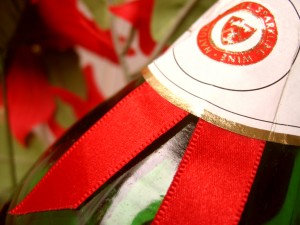 It’s mid-December and for most of us it’s crunch time with the checklist, gift list, party list and of course on my special people list … gifts for the wine lover. For those on this list, gift buying is more of a challenge than just grabbing a bottle of wine. To make tackling the list a little easier, I’ve scoured the gift world and my notes from the past to find some unique gift ideas for values and splurges.
It’s mid-December and for most of us it’s crunch time with the checklist, gift list, party list and of course on my special people list … gifts for the wine lover. For those on this list, gift buying is more of a challenge than just grabbing a bottle of wine. To make tackling the list a little easier, I’ve scoured the gift world and my notes from the past to find some unique gift ideas for values and splurges.
THE VALUES
Wine Enthusiast Double-Wall Iceless Wine Bottle Chiller (about $20) A sweating ice bucket is an eyesore (and safety hazard if the water makes its way to the floor). That’s why I like this iceless chiller. It has thermal-insulated walls that will keep a wine bottle chilled for about 3 hours without the exterior condensation that most chillers create. It has a simple design with acrylic walls and a stainless-steel trim.
Wine Across America, A Photographic Road Trip by Charles O’Rear (about $30) I love giving books as gifts because they are enjoyed throughout the year, and this is one of my favorites. While enjoying a friend’s bottle of out-of–state wine, renowned wine photographer Charles O’Rear and his wife, Daphne, were inspired to photograph America’s wineries. Eighteen months and 50,000 miles later, Wine Across America shows their journey, drinking in the passion and pride of winegrowers, winemakers and wine sippers from New England to California and everywhere in between. It features all the states, providing a spectacular photographic journey and uncovering the unique personality each region offers.
THE SPLURGES
Fusion Wine Glasses ($40 to $70 for a four-glass set) It happens to even the best of us … wine-glass breakage. Maybe it’s from a stumble, a slip, an exuberant toast at a dinner party or a casual meal with family. Crash! Tiny shards of glass are everywhere. But maybe not anymore. Fusion wine glasses are made with European crystal and fused with super-strong magnesium, forming a durable, lightweight, graceful wine glass that is break-resistant. The glasses are made in many sizes and styles. The company claims a 10-year warranty against breakage and that the glass will not cloud or dull.
The Napa Style Venetian Tumbler (about $70 for a set of six) I must admit this is one of my favorite wine presents. We enjoyed them so much we have since given them as gifts and ordered several more sets. Many Old-World wines are best enjoyed not from a fancy wine glass but from a tumbler. The glasses are very delicate to the touch but can still withstand a toast. Each tumbler has a distinct design of raised dots or lines. Champagne flutes are also available.
Le Nez du Vin Aroma Kits ($100-$400) I was given the aroma kit as a gift from my husband and have used it for more than 10 years. The kits help to develop the sense of smell while creating a common language when describing wines. Each vial has a distinct aroma such as orange, strawberry, coffee, lemon and even earth. With the controlled exposure to specific scents, you learn a better range of descriptors common in wines from around the world. The kits range from a master kit to ones geared to red or white wines, wine faults and oak casks.
 This time of year many of us are looking for a healthier start and ways to make better choices.
This time of year many of us are looking for a healthier start and ways to make better choices. This is the second in a two part column about wines to stock in order to have a variety on hand.
This is the second in a two part column about wines to stock in order to have a variety on hand. This will be a two-part column about recommended wines to stock in order to have a variety on hand.
This will be a two-part column about recommended wines to stock in order to have a variety on hand. Following the hectic bustle of Christmas shopping, travel and choices galore, it’s refreshing knowing that buying the ideal wine for New Year’s Eve is an uncomplicated decision. The tradition poured into the magical midnight toast only seems possible if you see tiny bubbles dancing in the glass. Not to say other wines, beers and spirits are not welcome at the occasion, but something about the sound of Champagne flutes clinking in a toast as the clock strikes midnight makes it an unquestionable choice.
Following the hectic bustle of Christmas shopping, travel and choices galore, it’s refreshing knowing that buying the ideal wine for New Year’s Eve is an uncomplicated decision. The tradition poured into the magical midnight toast only seems possible if you see tiny bubbles dancing in the glass. Not to say other wines, beers and spirits are not welcome at the occasion, but something about the sound of Champagne flutes clinking in a toast as the clock strikes midnight makes it an unquestionable choice. Choosing an ideal wine for Christmas festivities can be a hit or miss affair. We usually meticulously plan and prepare our menus, but sometimes the wine pairing is a last-minute thought. Here are some tips for effortlessly pairing Christmas foods and wine.
Choosing an ideal wine for Christmas festivities can be a hit or miss affair. We usually meticulously plan and prepare our menus, but sometimes the wine pairing is a last-minute thought. Here are some tips for effortlessly pairing Christmas foods and wine. It’s mid-December and for most of us it’s crunch time with the checklist, gift list, party list and of course on my special people list … gifts for the wine lover. For those on this list, gift buying is more of a challenge than just grabbing a bottle of wine. To make tackling the list a little easier, I’ve scoured the gift world and my notes from the past to find some unique gift ideas for values and splurges.
It’s mid-December and for most of us it’s crunch time with the checklist, gift list, party list and of course on my special people list … gifts for the wine lover. For those on this list, gift buying is more of a challenge than just grabbing a bottle of wine. To make tackling the list a little easier, I’ve scoured the gift world and my notes from the past to find some unique gift ideas for values and splurges.